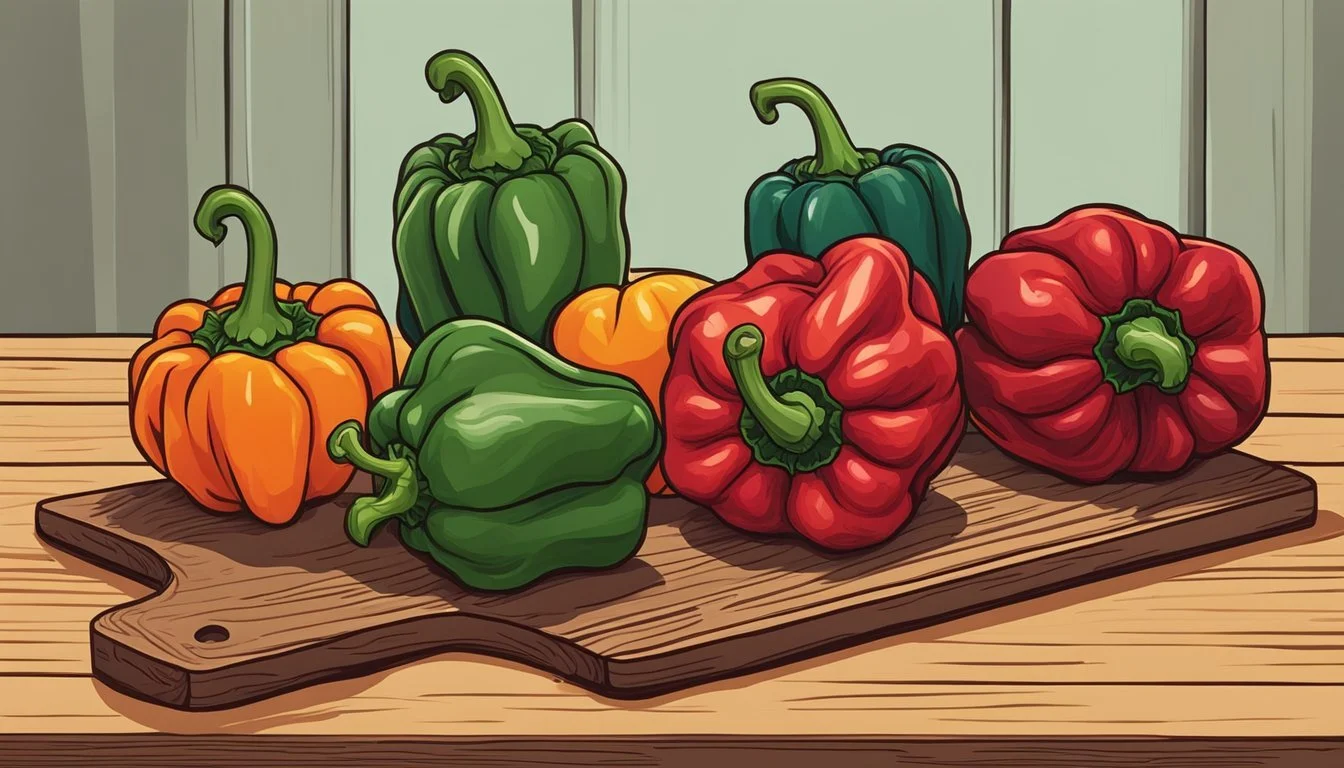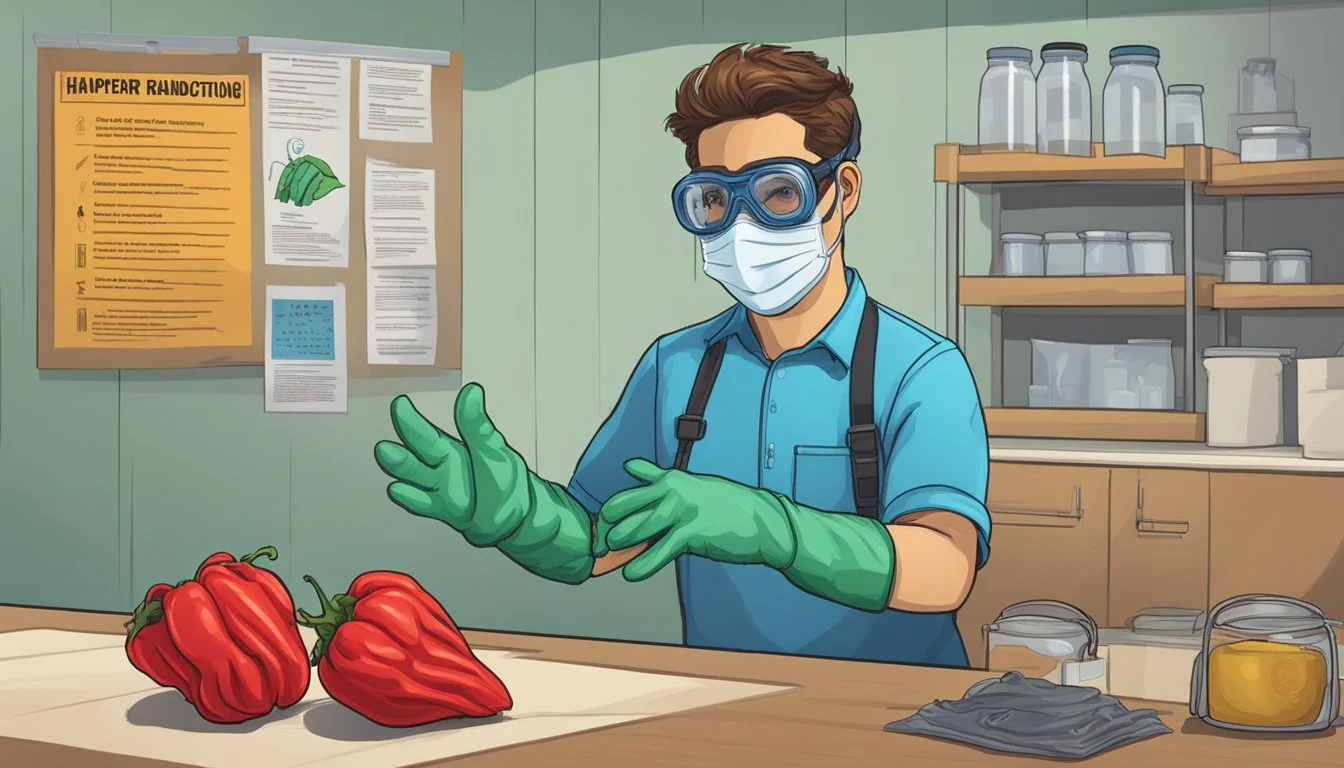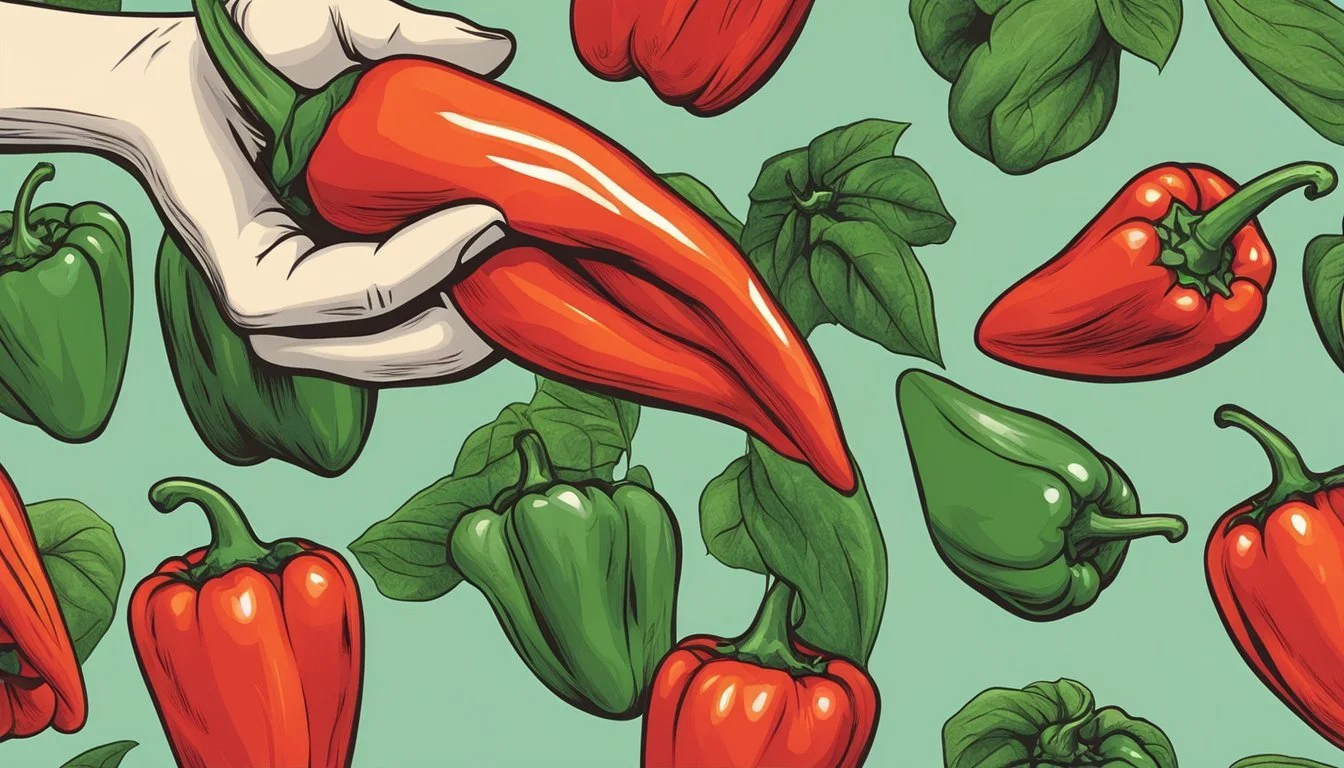Carolina Reaper Peppers Substitutes
Best Alternatives for Fiery Heat
Finding the perfect substitute for Carolina Reaper peppers can be challenging given their extreme heat and unique flavor. Developed by Ed Currie of the PuckerButt Pepper Company, the Carolina Reaper once held the Guinness World Record for the hottest pepper, boasting an average of 1,641,183 Scoville Heat Units (SHU) with peaks of over 2.2 million SHU.
Peppers that come close to the intense heat of the Carolina Reaper include the Trinidad Moruga Scorpion and the 7-Pot varieties, both of which exceed the 1,000,000 SHU mark. For those seeking a more accessible option without compromising too much on heat, habaneros can be a good choice, although they are milder with a distinct flavor profile.
Whether you’re looking to replicate the fiery kick or the unique taste, understanding these substitutes will help you make informed decisions in the kitchen.
Understanding the Carolina Reaper
The Carolina Reaper, recognized for its extreme heat, was developed by Ed Currie and has become a staple in spicy cuisines and challenges. This section covers its origin, features, culinary applications, and tips for growing.
Origin and Development
The Carolina Reaper, also known as HP22B, was created by Ed Currie of the PuckerButt Pepper Company. He developed this pepper in his greenhouse in South Carolina. By crossing a Pakistani Naga pepper with a Red Habanero, Currie aimed to create the world's hottest pepper.
The Carolina Reaper was first cultivated at Winthrop University. It held the title of the world's hottest pepper according to the Guinness World Records, with Scoville Heat Units (SHU) peaking at over 2.2 million.
Characteristics
The Carolina Reaper is visually striking with its bright red color and unique scorpion-like tail. It also has a wrinkled, bulbous appearance, making it easy to identify.
In terms of flavor, the Reaper offers a surprisingly sweet and fruity taste before the intense heat kicks in. Its heat level ranges from 1.4 to 2.2 million SHU, making it far hotter than most other peppers.
Culinary Uses
Carolina Reapers are popular in a variety of spicy dishes. They can be used fresh, dehydrated, or powdered to add extreme heat to sauces, salsas, and stews.
It's a key ingredient in many hot sauces due to its fiery heat and sweet undertones. When using the Reaper in cooking, it's important to handle it with care due to its potent heat.
Growing Tips
Growing Carolina Reapers requires some experience in gardening. They thrive best in warm, sunny locations with well-drained soil.
Seeds should be germinated indoors before the last frost, and transplanted outdoors when temperatures are consistently warm. These plants need plenty of sunlight, regular watering, and occasional feeding for optimal growth. When given the right conditions, they can produce an abundant harvest of fiery peppers.
Safety Measures and Handling
Handling Carolina Reaper peppers requires specific precautions to avoid adverse reactions. These peppers contain high levels of capsaicin, which can cause skin irritation and other health issues if not managed properly.
Precautions in the Kitchen
When working with Carolina Reaper peppers, wearing gloves is essential. Capsaicin, the compound responsible for the pepper's heat, can cause severe skin irritation. Goggles are recommended to protect the eyes, as even a small amount of capsaicin can lead to intense burning and watering.
Using a mask can help avoid inhaling capsaicin particles, which may cause respiratory issues or discomfort. Always wash your hands thoroughly after handling the peppers, even if gloves were used. It's important to clean all surfaces and utensils that come into contact with the peppers to prevent cross-contamination.
Health Considerations
Exposure to Carolina Reaper peppers can lead to more than just a burning sensation. Capsaicin can cause pain, headaches, and even a sensation similar to pepper spray if it comes into contact with sensitive areas like the eyes or nasal passages. Individuals with sensitive skin or respiratory conditions should exercise extra caution.
In case of accidental exposure, rinse the area with plenty of cold water and consider using milk to neutralize the capsaicin. Seek medical advice if the symptoms are severe. While using these peppers in cooking, ensure good ventilation to avoid inhaling fumes that could lead to discomfort or respiratory issues.
Identifying Appropriate Substitutes
When substituting for Carolina Reaper peppers, considerations include heat level, flavor profile, and availability in different forms such as fresh or powder. This guide will help you choose the best alternatives for your culinary needs.
Milder Options
For those seeking less intensity, Habanero peppers are an excellent choice. They offer a high but manageable heat level, ranging from 100,000 to 350,000 Scoville Heat Units (SHU).
Ghost Peppers, while still quite hot with SHUs between 855,000 and 1,041,427, are milder than Carolina Reapers and provide a comparable fruity flavor.
Fresno and Serrano peppers are much milder alternatives, suited for dishes where subtle heat is desired without overwhelming the palette.
Flavor Match
Matching the unique fruity and sweet flavor profile of Carolina Reaper peppers can be challenging. Habanero peppers, with their sweet and fruity notes, serve as one of the closest matches.
For a slightly different taste, consider Trinidad Moruga Scorpion peppers, known for their complex flavor and high heat, typically around 1,200,000 to 2,000,000 SHU.
Another option is the 7 Pot Douglah pepper, which provides similar fruity undertones and intense heat, making it an ideal substitute when flavor is a crucial factor.
Using Powder Form
If fresh substitutes are unavailable, powders offer a convenient alternative. Carolina Reaper Powder allows for precise heat control when added to dishes.
Alternatives like Ghost Pepper Powder and Habanero Powder also provide robust heat and flavor, though adjustments in quantity may be needed to match the intensity of Carolina Reaper powder.
Chili Powder blends, while generally milder, can be customized with additional spices to approximate the desired heat and flavor profile, although they might lack the distinct fruity sweetness of Carolina Reapers.
Utilizing these options ensures flexibility in achieving the desired culinary impact whether in fresh or dried form.
Culinary Applications
Carolina Reaper peppers are renowned for their extreme heat and unique flavor, making them a versatile addition to various culinary creations. They can be incorporated into hot sauces, main dishes, and even desserts.
Hot Sauce Creations
Carolina Reaper peppers are a popular choice for hot sauce due to their intense Scoville rating and unique taste.
Their heat and flavor can enhance sauces, providing a fiery kick to dishes. When creating hot sauce, it's crucial to balance the pepper's spiciness with other ingredients, such as vinegar, tomatoes, and garlic. A well-crafted hot sauce made from Carolina Reapers can be used in moderation to add depth to soups, salsas, and stews.
Tip: Wear gloves when handling these peppers to avoid irritation.
Cooking with Peppers
In cooking, Carolina Reapers add a distinct spicy flavor to various dishes. They are ideal for making spicy soups and stews, where their heat can permeate the entire dish.
Small amounts of chopped or ground Carolina Reaper can transform traditional dishes like chili, curries, and marinades into fiery delicacies. When using these peppers, it's important to start with a minimal amount and adjust according to preference, as their heat can be overwhelming. Incorporating these peppers into rubs for meats or as a seasoning for grilled vegetables can also elevate the dish's complexity.
Dessert Infusions
Carolina Reaper peppers are not limited to savory dishes; they can also add an exciting twist to desserts.
Pairing their heat with sweet ingredients like chocolate or fruit creates a unique flavor profile. Spicy chocolate truffles, pepper-infused jellies, and hot pepper-chocolate sauces are some innovative ways to integrate these peppers into desserts. In these sweet concoctions, the spiciness of the Carolina Reapers can balance the sweetness, creating a memorable culinary experience.
Note: Experiment with small batches to find the right balance between heat and sweetness.
The Cultivation of Hot Peppers
Cultivating hot peppers like the Carolina Reaper involves understanding both domestic gardening techniques and the complexities of hybrid genetics. This knowledge can help growers achieve high yields and quality in their spicy produce.
Domestic Gardening Tips
To successfully grow hot peppers such as the Carolina Reaper, it's important to start with high-quality seeds. They should be planted in nutrient-rich soil, ideally in small pots indoors to control temperature and moisture. Once the seedlings have developed a few leaves, they can be transferred outdoors.
Watering is crucial; pepper plants require consistent moisture but not waterlogged soil. Typically, using about 1-2 gallons of water per week per plant is optimal. Support structures like stakes or cages can be beneficial to prevent the plants from falling under their own weight.
Regular monitoring for pests and diseases such as aphids or fungal infections is necessary to ensure healthy growth. Using organic or chemical pest controls can help mitigate these risks.
Hybrid Varieties and Genetics
The development of hybrid peppers like the Carolina Reaper, Pepper X, and the Apollo Pepper involves careful genetic manipulation. Growers often cross varieties like Trinidad Moruga Scorpion and Ghost Pepper to achieve specific traits, such as extreme heat or unique flavors.
Carolina Reaper, also known as HP22B Pepper, resulted from crossing a Pakistani Naga pepper with a Red Habanero. These hybrids require several generations of cultivation to stabilize desired traits. Modern breeding techniques also allow for the creation of extremely hot peppers like the Dragon’s Breath Pepper.
Attention to genetic diversity is key to avoid issues such as susceptibility to diseases. Proper labeling and documentation during the cultivation process are essential for maintaining the integrity of hybrid varieties.
Preservation and Storage
The best ways to preserve Carolina Reaper peppers are through drying and freezing. These methods ensure that the intense heat and flavor of the peppers remain intact for extended periods.
Drying and Grinding
Drying Carolina Reaper peppers can maintain their potency and flavor for months. Slice the peppers lengthwise and remove the seeds if preferred. Spread them on a dehydrator tray, setting the temperature between 125°F and 135°F. Dehydrate until the peppers are brittle.
Once dried, grind the peppers to create a fine powder. A coffee grinder or spice mill works well for this. Keep the powder in airtight containers, away from light and moisture, to preserve its heat and aroma.
Freezing Techniques
Freezing Carolina Reaper peppers locks in their freshness and heat for several months. Start by washing and drying the peppers thoroughly. Place whole or sliced peppers in a single layer on a baking sheet and freeze until solid.
Transfer the frozen peppers to freezer bags or airtight containers, removing as much air as possible. Label the containers with the date. Properly stored, the peppers maintain their quality for up to six months. This method allows for easy access to fresh-tasting peppers whenever needed.







